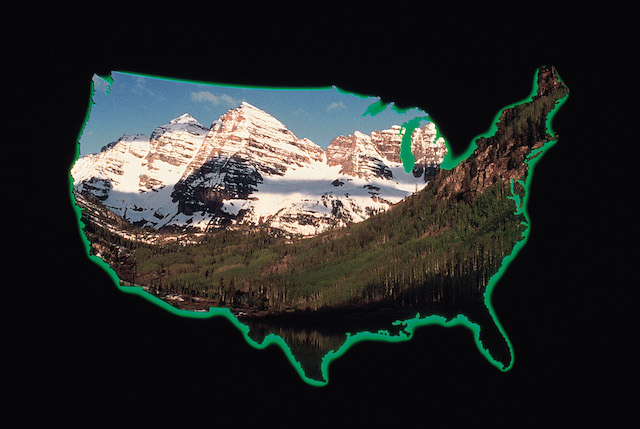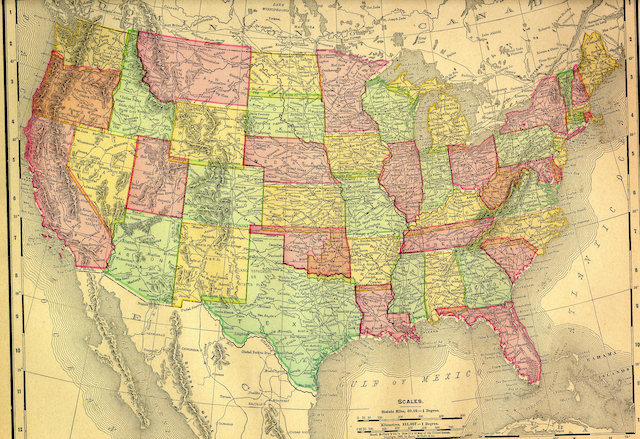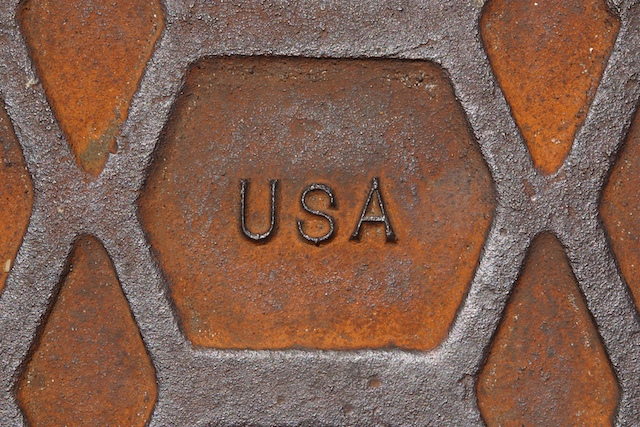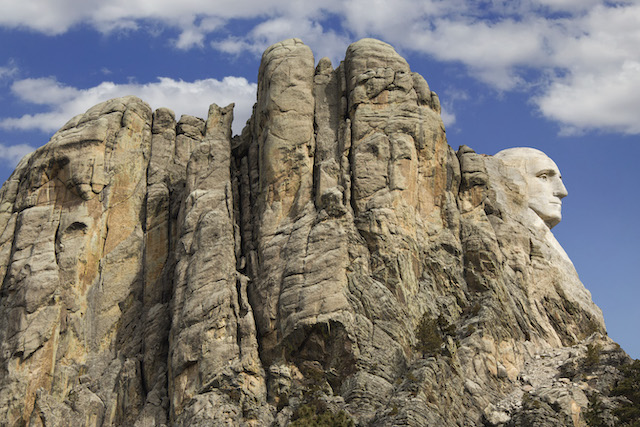Blank Map Of USA Historical Formation
The blank map of USA helps trace formation. It shows early shapes of land and future states. From the Atlantic coast, early territories spread west. Each added line marked growth, union, and promise. The blank map of USA reflects these first steps, drawn through land, time, and courage.
Thirteen states started the blank map of USA
The blank map of USA began with thirteen original states. These states came from British colonies seeking independence. Battles and documents shaped their new purpose. Delaware led as the first state to ratify. Others soon followed, from Pennsylvania to Georgia. These states formed the first marks on a blank map.
Land stretched west toward new names
After independence, leaders looked west across open land. The map held rivers, forests, and unknown stretches. The Northwest Ordinance helped shape early additions. Ohio and Indiana began to fill the blank space. Illinois, Michigan, and Wisconsin soon followed, each drawing fresh lines on the blank map of USA.
Louisiana purchase doubled land
In 1803, the United States bought land from France. This deal became the Louisiana Purchase. It doubled the size of the country. The Mississippi River now ran through American land. New states later rose from this ground. These lands helped shape the future map with strong, wide lines.
New states filled wide center ground
From the Louisiana Purchase came states like Missouri and Arkansas. Nebraska and Kansas joined as time passed. Oklahoma held native history and wide prairies. Iowa and Minnesota settled between rivers and lakes. These states added balance and purpose. Each brought farms, towns, and boundaries to the blank map.
Texas joined after standing alone
Texas had been a country before joining. It stood as the Republic of Texas. In 1845, it entered the United States. This added land with cattle, plains, and strength. Texas filled more of the blank space. Its shape and history stayed bold on every future map.
California and the West soon followed
In 1848, the Gold Rush brought thousands west. California became a state in 1850. Its coastline stretched far and wide. Oregon and Washington followed, filled with forests and rivers. Nevada rose with silver dreams. These western states brought color and contrast to the growing blank map of USA.
Civil War marked deep divides
By the 1860s, tensions ran high between states. Eleven Southern states left the union. The Civil War began. Maps then split with strong lines and heavy hearts. After the war, states remained united again. The map kept growing through rebuilding and peace, stronger and wider than before.
Reconstruction years brought growth and unity
After war, states rejoined and grew stronger. New states like West Virginia formed during the conflict. Colorado, Nebraska, and North Dakota came next. Railroads crossed open lands and connected regions. The map began to fill faster than ever. The blank map slowly turned full through peace and rails.
Great Plains added vast open shapes
Montana rose with mountains and herds. Wyoming formed around wide fields and trails. South Dakota and North Dakota held winds and space. These states added size to the map. They brought central power to the country. The Great Plains filled the blank middle with strong and steady land.
South stayed proud and firm
Alabama stood with steel and music. Georgia grew with cotton and culture. Mississippi and Louisiana held rivers and rich land. Florida reached south with sun and swamps. These states stayed proud through change. The blank map turned richer with Southern identity, marked by sound, land, and strong spirit.
New England stayed strong from the start
Maine led the Northeast with trees and ocean air. Massachusetts held history in every brick and path. Rhode Island stayed small but full of purpose. New Hampshire added forests and mountains. Connecticut shared ports and peace. New England gave the first lines on the map deep value and purpose.
Midwest became land of farms and lakes
Illinois brought cities and corn. Indiana shared fields and work. Ohio glowed with lakes and factories. Wisconsin grew with forests and clear water. Minnesota reached north with lakes and snow. These states shaped the heart of the country. The blank map of USA gained strength through their middle paths.
Southwest filled with sun and sand
New Mexico entered with desert and adobe homes. Arizona followed with deep canyons and color. These states added warmth to the map. Their culture came from Native, Spanish, and frontier roots. Texas stood tall nearby. Together, the Southwest painted bold shapes on the lower left corner of the map.
Alaska stretched far beyond the mainland
Alaska joined in 1959. Its size brought new meaning to the map. Cold, remote, and wide, Alaska touched the Arctic Circle. It added glaciers, forests, and vast resources. Though far, Alaska drew close with spirit and pride. The blank map stretched further than ever across oceans and ice.
Hawaii brought islands into the picture
In 1959, Hawaii became the fiftieth state. Its islands rose from the Pacific with music and light. Volcanoes, waves, and flowers filled this land. Hawaii’s location marked a turning point. The blank map of USA now held distant shores. The country had reached its current form.
Each new line marked stories and effort
Every state joined through effort and vision. Treaties, votes, and plans shaped their paths. New maps appeared after each state joined. Paper maps showed change year by year. Wall maps grew more detailed and bright. The blank map kept changing shape as more names filled the space.
Fifty states completed the shape
By 1959, the country reached its full form. The fifty states filled the blank map. From Maine to Hawaii, names filled space. Each one brought new voices and paths. Though small or large, every state mattered. The blank map became a patchwork of strength, growth, and history.
Maps help people trace their roots
People look at maps to see where they belong. Names bring pride, memory, and movement. From family trips to school lessons, maps stay close. People study lines and names with care. The blank map of USA connects generations. It helps trace the journey from past to now.
Capitals stand at each state’s center
Every state has a capital city. These cities hold government, history, and power. Sacramento leads California. Austin shapes Texas. Albany helps New York stand tall. Atlanta lights Georgia’s way. Juneau watches from Alaska. These cities bring focus to each name on the map.
Time zones connect space and rhythm
The country spans six main time zones. From Eastern to Pacific, hours shift. Alaska and Hawaii hold their own zones. These zones shape daily life across regions. The blank map of USA reflects these divisions. Time, like space, moves through land with calm and purpose.
Highways link states in long lines
Highways cut through the map like strong threads. Interstate 95 runs north to south. Interstate 10 crosses from east to west. Routes link cities, towns, and fields. Travelers move along these roads every day. The map’s empty lines became paths of cars, dreams, and trade.
Rivers, lakes, and forests added to shape
The Mississippi River cuts deep through many states. The Great Lakes touch five proud regions. Forests stretch across Oregon and Maine. These features help define each place. The blank map turned colorful through these natural marks. Land and water shape the country’s outline more than borders.
Territories stay outside the mainland map
Puerto Rico, Guam, and others remain territories. They are not states but part of the country. These lands hold culture, people, and deep ties. Though off the blank map of USA, they connect through flag and law. Their stories stay close to the heart of the union.
State lines followed nature and compromise
Some state borders follow rivers. Others follow mountain ranges. Some draw straight lines from past deals. The Mason-Dixon Line marked early borders. Each line tells of people’s decisions and effort. The map shows these choices in firm edges and gentle turns.
Maps changed with each passing century
Old maps show how things once looked. Early ones lacked the West Coast. Later maps filled new spaces. Digital maps now update in seconds. The blank map of USA no longer stays blank. It grows in detail, color, and connection with each new era.
Students learn geography through this shape
In schools, students trace the map’s shape. They color states and remember capitals. They use the blank map to learn names. This practice keeps memory and skill alive. Children grow with knowledge of the land. The map stays strong in every young mind.
Tourists follow maps to explore
Visitors move from one state to another. They follow highways, coastlines, and trails. National parks show nature at its best. City maps help find museums and food. Every tourist carries some form of a map. The blank map of USA stays with every traveler’s dream.
Map reflects people and progress
Though made of lines and names, the map holds life. It reflects the people who built the country. It shows places where change happened. The map marks where people stood, walked, and worked. The map shows that the journey never ends. Each shape carries movement, light, and memory.
From blank to bright
The map once held no names or lines. Now, it carries stories, borders, and unity. Every inch on paper holds effort and past. The blank map of USA grew full through vision, courage, and peace. Today, it shines with fifty states and countless dreams stretching across land and sea.





